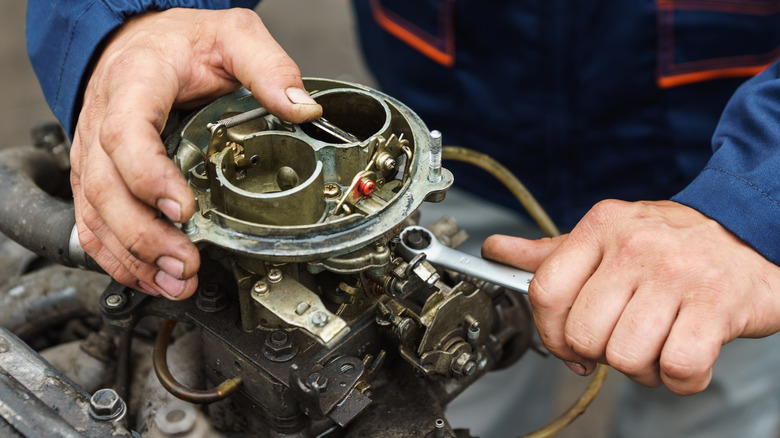When (And Why) Did American Cars Stop Using Carbureted Engines?
If you've got a bit of knowledge about gasoline-powered cars, you likely know that internal combustion happens when fuel and air are mixed, a spark is introduced, and the fuel burns inside the engine. There are several different types of combustion engines, but, at the risk of oversimplifying things, that's the basic process at the heart of an internal combustion engine. Eventually, further down the line, we get vehicle movement as a result of this combustion. But before any of that can happen, an engine needs fuel to be provided in a precise manner.
These days, efficient and generally reliable fuel injection systems supply fuel to engines, but that wasn't always the case. Before the fuel-injection systems, there was carburation. Carburetors were introduced in the late 1800's and they were used on most automobiles for nearly a century. In the late 1980s and early 1990s, however, fuel injection took over. Why exactly did the change happen? In short, it was for efficiency and performance. Fuel injection offered advantages over carburetors, with better efficiency, cleaner emissions, and improved performance. Fuel injection could also more easily be controlled via modern electronics systems, and problems could be diagnosed via onboard diagnostic systems (OBD). The auto industry eventually phased out carburetors on new vehicles by 1994.
The last hold-out of the carburetor era
The elimination of carburetors was a lengthy process, taking decades of development, with some automakers progressing at slower rates than others. Mercedes-Benz introduced direct injection on the 300SL in the 1950s. General Motors and Chrysler used fuel injection on high-performance cars by the mid-to-late 1950s as well. In the early 1980s, Ford introduced fuel injection on Escorts, Mustangs, and Thunderbirds. But there were still a few vehicles holding out and using carburetors until the early 1990s.
The final car sold with carburetors in the U.S. was a pickup truck from the now-defunct Isuzu brand. The truck, aptly named the Isuzu Pickup, came with a carbureted engine for 1994. This was right as all American cars were switching to the OBD-II standard, and fuel efficiency standards were increasing. Isuzu eventually stopped selling cars in the United States in 2009, long after it had converted all its vehicles to fuel injection.

